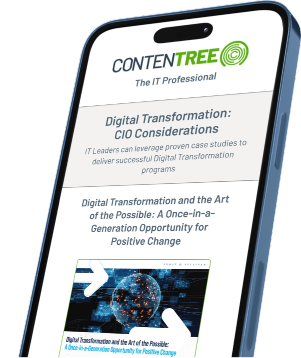
Sales professionals are facing mounting pressure every day. From delivering consistent messaging to hitting revenue targets faster, the modern selling environment is relentless. This is where sales enablement comes in—a strategic process that equips representatives with the right tools, content, training, and insights to win more deals.
What Is Sales Enablement—and Why It Matters
At its core, what is sales enablement? For sales reps, it’s a complete support system. This includes content, coaching, analytics, and guided selling strategies that streamline workflows and empower high-performance interactions.
Sales enablement ensures teams have:
- Easy access to collateral and resources.
- Consistent messaging aligned with marketing.
- Data-driven insights to guide decision-making.
In today’s market, sales cycles are longer and more complex. Buyers are more informed, stakeholders are diverse, and sellers must be sharper, faster, and more strategic. The right sales enablement infrastructure can:
- Boost win rates.
- Shorten ramp times.
- Improve quota attainment.
All of this is possible by aligning sales, marketing, and customer success around shared insights and resources.
Defining Sales Enablement Software, Tools, and Platforms
- Sales enablement software: Specialized applications that centralize content, training, onboarding, and analytics.
- Sales enablement tools: Individual functionalities like asset libraries, conversation intelligence, or training modules.
- Sales enablement platforms: Comprehensive systems that unify training, content, outreach, and analytics in one place, ideal for scaling and cross-functional alignment.
A modern enablement system should integrate smoothly with CRMs, content management systems, and sales engagement solutions to maximize visibility and impact.
The Best Sales Enablement Software and Platforms
Here’s a breakdown of leading solutions, reviewed by categories and features most relevant for sales professionals.
1. Enterprise-Grade Platforms
Salesforce Sales Cloud
A CRM powerhouse with embedded sales readiness, content management, and workflow automation.
Key Features:
- Customizable dashboards and advanced pipeline visibility.
- Embedded enablement tools for training and coaching.
- Seamless integrations with thousands of third-party apps.
This is perfect for scalability and deep functionality. However, it’s important to note that the complexity and pricing grow with scale.
HubSpot Sales Hub
A streamlined platform with CRM, automation, email tracking, and pipeline visibility—popular with small to mid-sized teams.
Key Features:
- Email sequencing and tracking.
- Sales analytics dashboards.
- Built-in content sharing and meeting scheduling.
This tool is user-friendly with a generous free tier, which makes it perfect for small businesses and beginners. Its advanced features may require paid upgrades.
2. Content-Driven Enablement Platforms
Highspot
Designed for content-centric selling, Highspot makes it easy for reps to find, share, and track relevant materials.
Key Features:
- AI-powered content search and recommendations.
- Guided selling playbooks.
- Advanced analytics on buyer engagement.
This tool has an intuitive interface with strong adoption rates. However, it has a steep learning curve for advanced analytics features.
Seismic
Known for its content personalization and automation capabilities, Seismic ensures messaging stays consistent.
Key Features:
- Dynamic content creation and compliance controls.
- LiveDocs for real-time personalization.
- Enablement intelligence dashboards.
This tool is excellent for large enterprises with complex compliance needs.One of its drawbacks, however, is its setup and onboarding can be resource-intensive.
Showpad Content (eOS)
Showpad Content balances usability with depth, making onboarding smoother and adoption easier.
Key Features:
- Centralized content hub.
- Training and certification modules.
- Sales coaching and analytics.
This tool is good for beginners with its user-friendly design. However, reporting isn’t as advanced as its competitors.
3. Conversation Intelligence & Coaching Tools
Gong
A leader in conversation intelligence, Gong analyzes sales calls to improve coaching and deal visibility.
Key Features:
- AI-driven call transcription and analysis.
- Deal forecasting based on conversation data.
- Coaching dashboards for managers.
It has powerful insights that directly improve rep performance. However, using this tool can be overwhelming for smaller teams without enablement support.
Chorus (ZoomInfo)
Another major player in call intelligence, Chorus focuses on turning customer conversations into actionable insights.
Key Features:
- Call recording and keyword tracking.
- Buyer sentiment analysis.
- Integration with CRM and collaboration tools.
This is great for team coaching and competitive intelligence. Its interface can feel cluttered compared to Gong.
4. Sales Engagement Tools with Enablement Features
Outreach
Combines engagement workflows with enablement functions, making it easy to run multichannel campaigns.
Key Features:
- Automated sequences and task management.
- AI-powered deal health scoring.
- Integration with sales enablement platforms.
This tool is excellent for pipeline acceleration. However, it may require extensive onboarding.
SalesLoft
Similar to Outreach, SalesLoft offers engagement paired with enablement capabilities.
Key Features:
- Email and call sequencing.
- Conversation intelligence add-ons.
- Pipeline visibility dashboards.
This is best for companies that want a streamlined interface and strong reporting. It’s best suited for mid-sized to large sales teams.
5. Learning & Training Platforms
Allego
This tool specializes in sales learning, video coaching, and microlearning.
Key Features:
- On-demand training and peer-to-peer video sharing.
- Interactive onboarding experiences.
- Content reinforcement with quizzes and assignments.
This tool is great for building a continuous learning culture. However, it’s limited outside of training and coaching use cases.
MindTickle
A learning-focused enablement tool designed for ongoing readiness and skill development.
Key Features:
- Gamified training modules.
- Competency scoring and readiness dashboards.
- AI-driven coaching recommendations.
It has strong analytics and an engaging training format. It can feel siloed if not integrated with broader platforms.
Conclusion
Sales enablement isn’t just another software buzzword—it’s a strategic imperative for sales professionals aiming to stay competitive in 2025 and beyond. Whether you’re seeking sales enablement software that centralizes content, sales enablement tools that sharpen coaching and outreach, or full-scale sales enablement platforms to unify your tech stack, the right fit depends on your team’s size, goals, and maturity.

